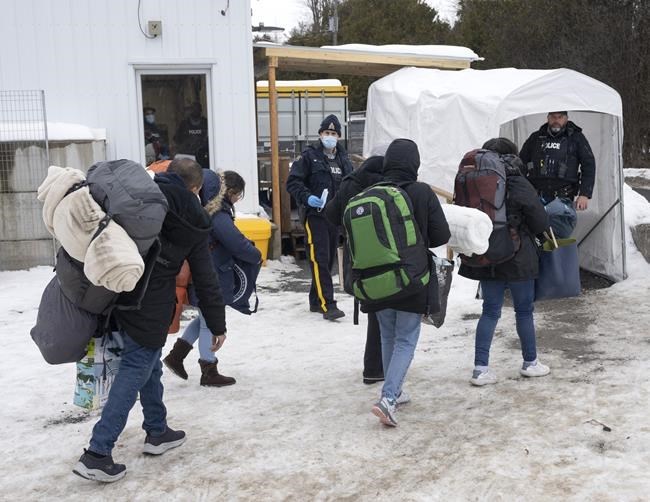WASHINGTON — Closing the world's longest international border to migrants traversing the U.S. in order to claim asylum in Canada might solve a political problem for Justin Trudeau, but immigration advocates say it will only endanger lives in the meantime.
Friday's agreement between the prime minister and President Joe Biden, which actually dates to April 2022, evokes an evolving global approach to surging migration: widening legal pathways while cutting off the irregular ones.
But making it harder than ever for migrants to claim asylum will only encourage them to undertake ever more dangerous journeys, said Yael Schacher, director for the Americas at Refugees International.
"Asylum is getting more and more restricted in the United States, so not having a way to get to Canada to ask for asylum is a big cutoff," Schacher said.
"The problems with the U.S. asylum system and access to asylum in the United States are already getting worse, so there's all the more need for this pathway to Canada, which is now being cut off."
Biden and Trudeau have agreed to a supplement to the 2004 treaty known as the Safe Third Country Agreement, which governs asylum claims by migrants crossing the Canada-U.S. border.
The treaty expressly forbids such claims at official entry points, but was silent on other unofficial border crossings — a big reason why Canada has seen for years thousands of would-be claimants slipping into the country at junctures like Roxham Road in Quebec, where they can request asylum without fear of being returned to the U.S.
That all changes as of early Saturday morning, when the supplement — the "Additional Protocol 2022" — takes effect, extending the terms of the treaty so they apply along the full extent of the nearly 9,000-kilometre frontier.
The two countries have already agreed to the new protocol, which will require amendments to existing U.S. regulations, according to a draft order posted Friday on the U.S. Federal Register.
It will ensure the agreement applies to "individuals who cross between the official (points of entry) along the U.S.-Canada shared border, including certain bodies of water as determined by the United States and Canada."
Migrants have been flooding Roxham Road in recent years; more than 39,000 asylum claims were filed in 2022 by people who were intercepted by the RCMP, the vast majority of them in Quebec.
There's nothing like the same number of would-be claimants moving in the opposite direction, prompting questions about the political upside for Biden — who has much larger migration headaches at the Mexico-U.S. border.
Canada has agreed as part of the deal to welcome an additional 15,000 migrants from across the Western Hemisphere this year — a figure that towers over the paltry 4,000 they agreed to last June at the Summit of the Americas in Los Angeles.
One thing is clear, said Schacher: the agreement "will benefit Canada much more than the U.S. Trudeau is winning on this deal."
One emerging theory revolves around Title 42, the pandemic-era public health measure imposed in March 2020 that gave the U.S. broad power to expel migrants for fear of the spread of COVID-19.
The Biden administration's original plan to was to rescind the measure on May 23, 2022 — less than six weeks after U.S. regulatory documents say the supplement to the Safe Third Country Agreement was signed on April 15.
A lawsuit brought by Republican state attorneys-general, however, forced the U.S. to cancel its original plan to revoke Title 42. It's now slated to end May 11.
The U.S. has long been preoccupied with ensuring parity between north and south in its border measures, fuelling speculation that the Canada-U.S. agreement could be in anticipation of new post-Title 42 measures.
"I think it might be something like, 'Well, we have to think about parity between the way we treat like Mexico and Canada,'" Schacher said.
Canada, too, has a lot of international credibility on migration issues, she added, and could be a big help in selling a new "managed migration paradigm" for the hemisphere that puts the emphasis on legal pathways.
"That would be a big deal for the Biden administration, because Canada is seen as even more progressive on refugee issues generally than the United States."
Elora Mukherjee, director of the Immigrants' Rights Clinic at Columbia Law School, calls the new deal an "unfortunate development" for asylum seekers.
Canada has also agreed to welcome an additional 15,000 migrants this year from across the Western Hemisphere as part of the new agreement.
This report by The Canadian Press was first published March 24, 2023.
James McCarten, The Canadian Press



